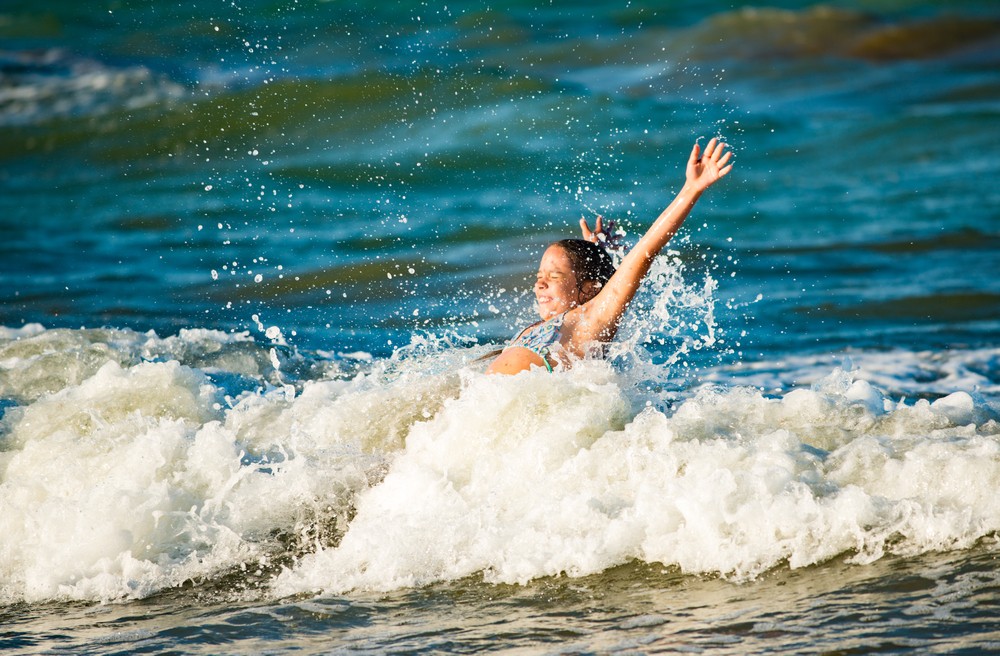For the Fourth of July, many people head to the water — whether that’s a pool, lake or beach. But holiday outings will be different this year due to the ongoing COVID-19 pandemic.
“If your community is reopening, it’s important to know which safety measures to take as you venture out in public,” said Barry Porter, Regional CEO, American Red Cross Eastern North Carolina.
- Avoid crowds and mass gatherings. Both in and out of the water, maintain social distancing by staying 6 feet away from people who don’t live with you, especially if you are at high risk for serious illness from COVID-19.
- Continue to wear cloth face coverings in public. Face coverings are most essential when social distancing is difficult. Follow guidelines for your area when it comes to how large gatherings can be.
- Stay home if you are sick.
Water Safety
Be water smart — have swimming skills and know how to help others. At home pools, young children are most at risk of drowning, and in open water, such as ponds, rivers and lakes, people of all ages are more likely to drown than any other location.
- Talk to your children, including older youth and teenagers, about water safety. A variety of resources are available at redcross.org/watersafety and redcross.org/watersafetyforkids.
- If you choose to take your family to the water, make sure the area is designated for swimming and has lifeguards on duty.
- Wear face coverings on land, especially when physical distancing is difficult. Do not wear them in the water as it may be difficult to breathe. Don’t share goggles, nose clips, snorkels or other personal items.
- Designate a water watcher whose sole responsibility is to supervise people during any in-water activity until the next person takes over.
- Kiddie or inflatable pools can be a great way to have fun. Drain the water from the pool and flip it over after swim time is over.
Beach Safety
Learn how to swim in the surf. You should also swim only at a lifeguard-protected beach, within the designated swimming area. Obey all instructions and orders from lifeguards.
- Keep alert and check the local weather conditions.
- Swim sober and never swim alone.
- Make sure you have enough energy to swim back to shore.
- Inexperienced or non-swimmers should wear U.S. Coast Guard-approved life jackets as an extra layer of protection. No one should use an inflatable or other floatation device that is not Coast Guard approved unless they are able to swim.
- Don’t dive headfirst — protect your neck. Check for water depth and obstructions before diving and go in feet first the first time.
- Pay close attention to children and elderly persons when at the beach. Even in shallow water, wave action can cause a loss of footing.
- Keep a lookout for aquatic life. Water plants and animals may be dangerous.
- Before you leave for the beach, check the official National Weather Service surf zone forecasts and/or beach advisories and closings link. You also can ask your hotel or rental agency for local sources of information.
- Know what the warning flags mean in your location. Read the beach safety signs at the entrance to the beach. Once on the beach, look for beach warning flags, often posted on or near a lifeguard’s stand. Please read and obey the posted beach signs and warning flags.
About Rip Currents
Rip currents are responsible for deaths on our nation’s beaches every year and for most of the rescues performed by beach lifeguards.
- If you are caught in a rip current, swim parallel to the shore until you are out of the current. Once you are free, turn and swim toward shore. If you can’t swim to the shore, float or tread water until you are free of the rip current and then head toward shore.
- Stay at least 100 feet away from piers and jetties. Permanent rip currents often exist near these structures.






